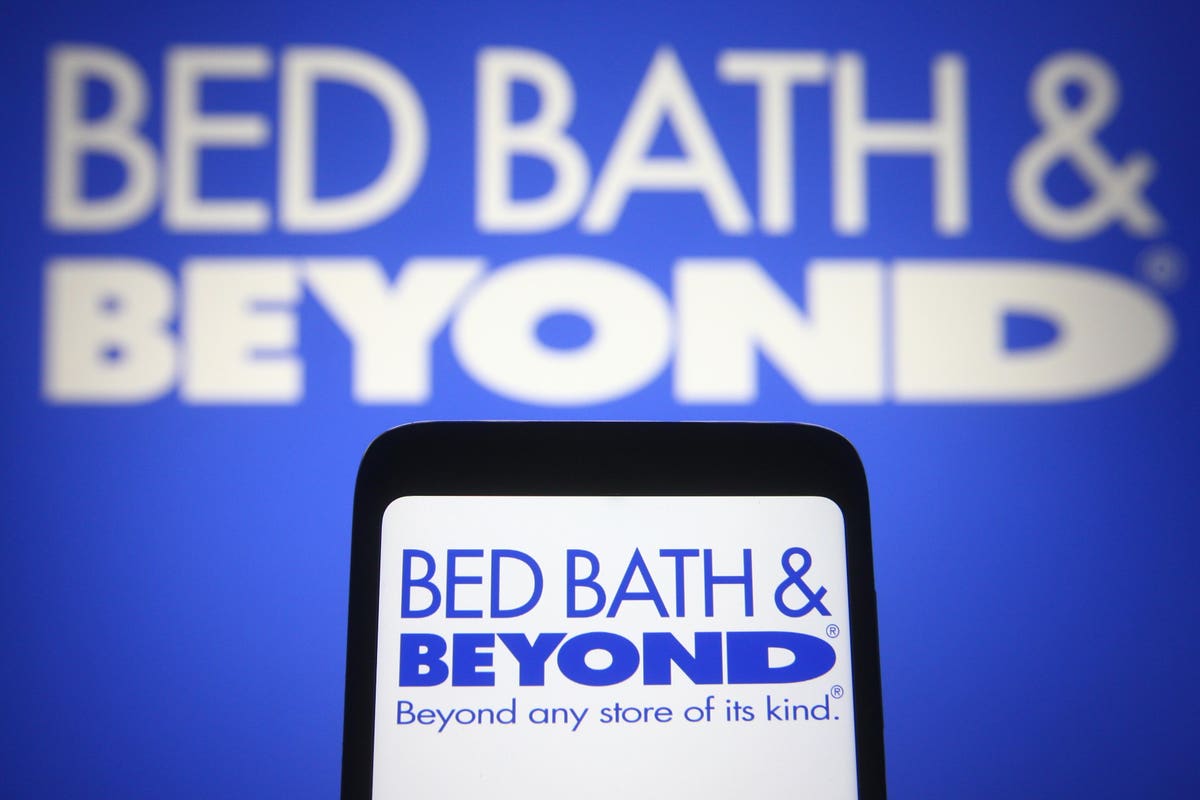Overstock.com has been dragging dead weight – the stigma of its name – over its multi-year mission to become an exclusive home furnishings destination online.
“We’ve long looked for ways to rebrand but wanted to do so in a way that wouldn’t take years or cost hundreds of millions of dollars,” CEO Jonathan Johnson said in an investors call announcing the acquisition of Bed Bath & Beyond’s intellectual property assets, including its customer list and website domain, for $21.5 million in cash.
Now it can show customers, product suppliers and investors a fresh face that reflects its business under a brand name familiar to all – Bed Bath & Beyond. And it’s done it on the cheap with little downside.
“Combining the strengths of the Overstock operation model and the Bed Bath & Beyond brand name will create powerful synergy,” CEO Jonathan Johnson said in a statement. “I’m excited for consumers to experience the new Bed Bath and an even bigger and better Beyond.”
Wall Street investors certainly like the deal, with its stock price per share almost doubling from $18 and change June 1 to close at $32.57 yesterday.
Turning Tailwinds Into Headwinds
Now live in Canada as bedbathandbeyond.ca and its launch in the U.S. to follow later this summer after any kinks in the transition are worked out, Johnson believes the company has turned the corner, setting its sails to the powerful tailwinds the Bed Bath & Beyond brand name gives.
“The name Overstock has been a headwind for us. It’s been two decades since we were a liquidator,” he shared with me following his formal presentation.
The old name created disappointment for shoppers searching for liquidation deals and confusion for shoppers looking for high-quality home goods. It also turned off some product suppliers who were confused too.
Noting that its transition to an all home, all the time online retailer was harder than the company originally thought, he continued, “Bed Bath and Beyond are generic terms meaning who we are and it is an iconic brand with high awareness and customer loyalty. We’ve taken headwinds and turned them into tailwinds.”
Setting A New Course
The company certainly has some headwinds to overcome. How much is attributable to its old name is unknown, but it certainly didn’t help.
Overstock.com rode the pandemic-driven home wave to great heights, ending fiscal 2020 with revenues of $2.5 billion, up 75% year-over-year, earning it the number two slot in the National Retail Federation’s 2021 Hot Retailers list.
Fiscal 2021 was another strong year, with revenues advancing 11% to $2.8 billion, but in the third and fourth quarter, the tide began to turn, with revenues dropping 4% and 9%, respectively.
Then it hit the wall in fiscal 2022 with revenues down 30% to $1.9 billion, still ahead of the $1.5 billion in fiscal 2019 but well off its high-water mark.
While Bed Bath & Beyond was slow to adapt to e-commerce, it still brings along tremendously powerful assets and leverage. It’s Welcome Rewards loyalty program is in the high-single million digit range, Johnson explained, more than Overstock’s entire active customer base. And its 20+ million active customer base is over four times greater than Overstock’s active customer base.
Johnson said the results of the acquisition won’t show up on the balance sheet until fourth quarter and gain momentum in 2024. The company may hit a slight speed bump as it rebrands its existing Club O loyalty program to Welcome Rewards.
But it will also look for new growth opportunities as the Overstock brand name is sunsetted, such as a registry business, trade and B2B sales and possible private-label offerings under the various Bed Bath & Beyond brands.
The plan is to go slow to maximize its market share growth potential in the $400 billion addressable home furnishings and furniture market.
$1 Billion Upside
Johnson noted that if those existing Bed Bath & Beyond customers come along, it could represent upwards of $1 billion in additional revenue. Industry expert Warren Shoulberg, who’s followed the implosion of Bed Bath & Beyond closely, believes that is a strong possibility.
“Since the Bed Bath & Beyond name really hasn’t been out of the market for long, this is a good deal for Overstock. Consumers haven’t been following the drama as closely as those in the trade, and they may not even notice the change,” he said.
I certainly didn’t in visiting the Canada site with its home page invitation, “The brand you love is back,” and limited-time deal offers.
Advantage Of An Asset-Light Business Model
Without the overhead of managing stores, Bed Bath & Beyond will fold seamlessly into Overstock’s asset-light business model. “We own almost no inventory, so we aren’t risking capital to buy it. Our supplier partners drop ship for us. We are really a market-curated marketplace for the suppliers who do business with us,” Johnson said.
And since the acquisition news was leaked, new product suppliers have been clamoring to get on board, with over 100,000 new products added in the bed and bath category alone.
Not all Bed Bath & Beyond SKUs will be carried over, just a curated selection that best fits the company’s mission and vision. However, failing to curate Bed Bath & Beyond’s offerings played a part in the company’s demise.
“Mismanagement can kill companies, but it doesn’t kill brands,” Johnson declared as he observed the Bed Bath & Beyond was trying to force its customers to be who “management” wanted them to be, rather than management working to solve for what their customers wanted.
Johnson and his team have a fix for that. “Customers want to feel they got a deal and a smart value; that they’ve found something just right. That’s what Overstock has done for a long time. Our business model and our marketing fits with that customer,” he said, and added:
“We’re not trying to reboot a bankrupt brand. We’re trying to take a brand that’s been through bankruptcy but still strong and apply it to a business model that works. We’re using this to remove our headwind and put tailwinds behind us with this iconic brand name.”
See Also:
Read the full article here





